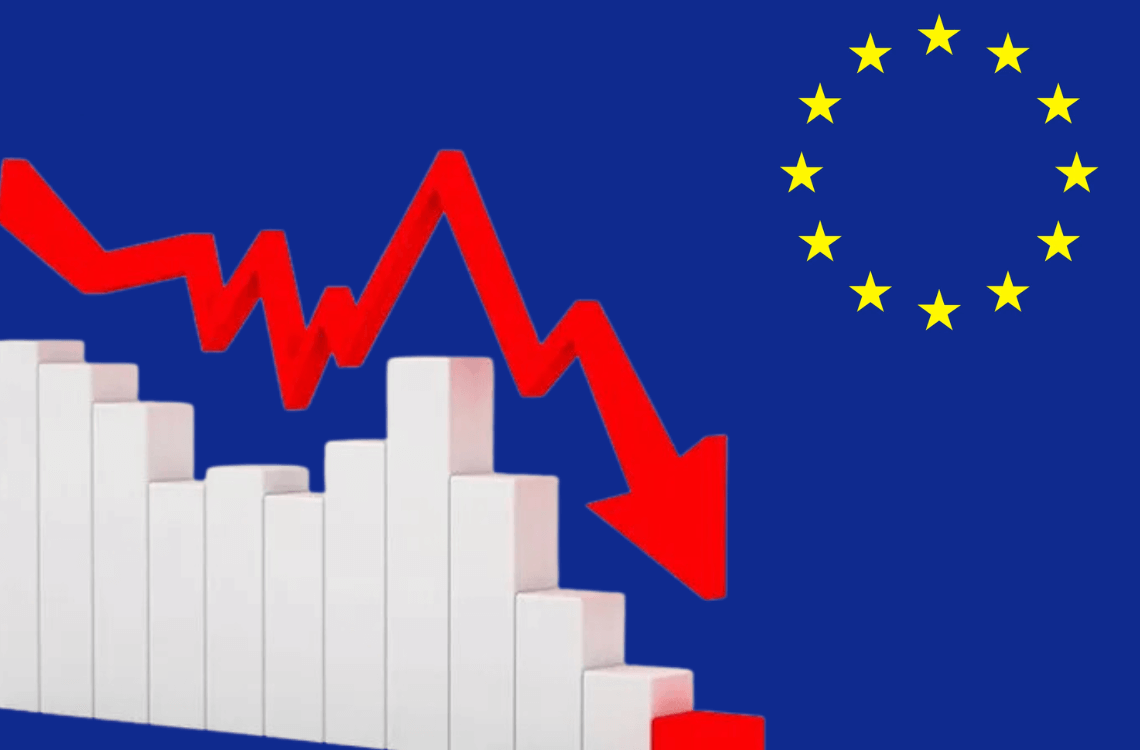Europe has once again caught the financial world’s attention. The eurozone’s second-quarter growth and July’s falling inflation are creating both opportunities and concerns, with complex dynamics playing out in various sectors. Let’s take a closer look at the numbers and what they mean for Europe’s economy.
Mixed signs: Growth returns, but challenges remain
After a stagnant last quarter and a contraction in the final three months of last year, the eurozone’s economy is finally showing signs of life. Growth in the second quarter reached 0.3%, a number that, while modest, is a welcome rebound from the European Central Bank (ECB)’s unprecedented rise in borrowing costs over the past year.
However, the enthusiasm should be tempered. This growth is primarily due to one-off factors and is considered by economists to be unsustainable.
For instance, a 3.3% surge in Irish GDP has contributed significantly to this growth, influenced by shifts in intellectual property by large U.S. technology and pharmaceutical companies.
Excluding Ireland, the picture isn’t as rosy. Growth would have been halved, and some economists predict that the eurozone is more likely to continue stagnating in the coming quarters.
Another concern is the record high services inflation of 5.6%. The ECB’s continuous raising of interest rates is meant to reduce price pressures towards its 2% target, but July’s data proved disappointing. It seems that the desired rate cuts may not happen until well into next year.
Uneven performance: Winners and losers in Europe
While the eurozone as a whole shows signs of recovery, a closer inspection reveals a varied landscape. France experienced an accelerated GDP growth of 0.5% in Q2, largely thanks to the export of a cruise ship.
This, while a positive figure, doesn’t reflect a broad-based improvement in the French economy. Italy, however, faced a contraction of 0.3% in the second quarter.
The decline in Italian industry and farming output has negated slight growth in services, making Italy the weakest performer among the eurozone’s big economies.
The end of the “Superbonus” scheme, offering Italians tax credits for energy efficiency work on homes, has likely triggered this downturn.
Even though ECB president Christine Lagarde expressed optimism about the GDP figures from France, Germany, and Spain, many economists view the eurozone’s growth forecast of 0.9% for the year as overly ambitious.
Critics, especially in Italy, have even warned that the ECB’s rate hikes could risk dragging Europe into a recession. Inflation in Europe has been an ongoing concern.
Though it has fallen more slowly than in the U.S., it is outpacing the UK. The reduction in Eurozone energy prices and a slowdown in food, alcohol, and tobacco inflation provide some relief, but the persistent price pressures in services remain an obstacle to economic stabilization.
Europe’s Q2 growth and falling inflation paint a picture of an economy that is slowly rebounding but faces several substantial challenges. The mixed signs and uneven performance across the region underline the complexity of Europe’s economic landscape.
While growth is happening, it’s fragile and prone to reversal. The ECB’s approach to inflation and interest rates must be carefully managed to avoid the risk of recession. Europe’s policymakers must stay vigilant, ensuring that short-term gains don’t lead to long-term pains.





